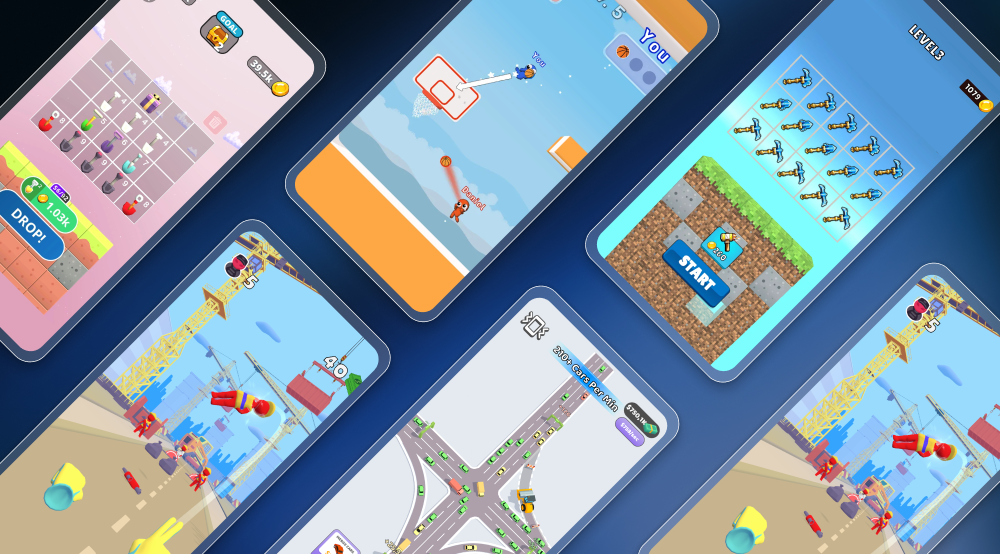Tom Kinniburgh, a mobile consultant for game studios, who also runs the popular blog Mobile Free to Play, talks about the history of hyper-casual, monetization and user-acquisition best practices, working with publishers, and more.
This episode is part two of a three-part series focused on designing, monetizing, and marketing hyper-casual games.
Read on for edited highlights from Kinniburgh’s podcast:
Hyper-casual as a business model
“The business model of casual games is to monetize players through premium currency. The objective is to keep people playing and to put a pain point in the flow of the game. For example, in a match-3 game, you run out of moves, lose a level, and pay premium currency to skip it.
But hyper-casual removed almost all premium currency and turned to video ads to monetize free players. The focus of hyper-casual is to optimize the number of videos views and the number of video networks you can support, in order to get the highest ad yield from your game.
The business model is different. You’re not interested in building this long-term relationship with a player where they feel the need to spend money. You have a much more short-term relationship, where you want them to quickly die and watch an ad to continue.”
It’s an arbitrage game
“Hyper-casual developers are basically playing an arbitrage game of how cheap you can get an install, to how much you can money you can make from that install with ads.”
Monetization KPIs
“The core KPI hyper-casual developers should look at is high day 1 retention, because that means your game so interesting and exciting that users want to play it tomorrow, too. The next important metric is the number of views you can generate from your ad units per DAU. It’s not all about retention - it’s about whether the mechanic itself fits nicely with video views.”
Should you publish?
“Let’s be honest about what a publishing deal really is. You’re swapping your potential revenue that you could get today for the idea that shared revenue could be worth more money in the future.”
“If you’re fresh, I think working with a publisher early on is going to teach you so much. Just because you’ve built a game that gets 65% retention, doesn’t mean you’ll be a success. You still have a lot of work to monetize it and market it - accepting where your weaknesses are is what a publisher is all about.”
“The question is whether you want to invest the time and effort, not in game design, but in learning how to market your game - that means creating campaigns, designing creatives, understand messaging and targeting, audiences, understanding data and optimizing your campaigns.”
What qualities should you look for in a publisher?
“Look for a publisher that’s done something in the past similar to what you’re doing now, because you’ll know they have an audience, and know how to market your game effectively. The other thing to look at is scale.”
“You want to ask questions like: How would you scale my came? What would you do? Most of the time developers don’t ask the right questions. But you can dig in, and ask about the publisher’s marketing plan and how they did it in the past. If the publisher isn’t willing to tell you, that’s a big red flag. The more open and honest a publisher is on what they do and how they do it, and how they’re going to do it for you, the better.”
Want to learn what goes into making the world’s most popular games? Subscribe to LevelUp to never miss an update.




